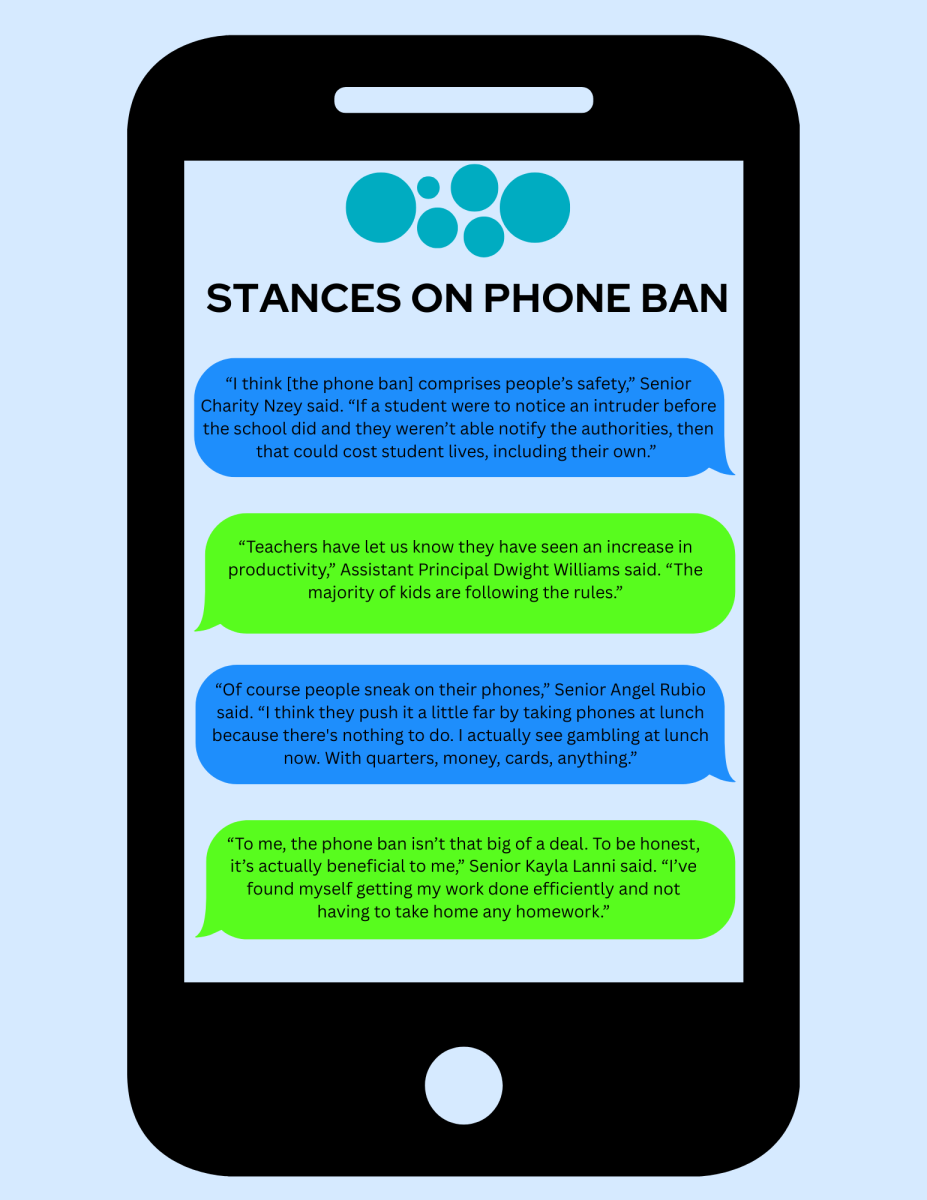On the morning of June 20, students all across Texas received terrible, bone- chilling news: By Sept. 1, all public school students would lose their lifelines.
The phone ban itself isn’t the issue. It’s how far the state has decided to go with it. Instead of banning phones during class time, they’ve decided to ban them during lunch and passing period as well, which is completely unnecessary. While a phone ban during class time may actually be a good idea, bringing that ban outside of the classroom is uncalled for.
The ban has been a long time coming. Texas lawmakers have been pushing a statewide phone ban in the academic setting for years. In September 2024, Texas Education Agency Commissioner Mike Morath suggested a statewide phone ban.
“If it were in my power, I would have already banned them in all schools in the state,” Morath said.
House Bill 1481, the bill setting the phone ban in motion, was introduced in March 2025 by Texas House Rep. Caroline Fairly, which aimed to cease cell phone use during class time. The bill was signed by Gov. Greg Abbott in June 2025.
“Educators and researchers have raised concerns about the impact that smartphones have on student learning and student engagement,” Abbott said. “If we are going to be number one in education, it is going to require the undivided attention of our students in the classroom.”
The bill has produced a considerable amount of controversy among students, teachers and parents. Many argue that phones are classroom disrupters, and cause countless issues outside of the classroom.
Despite what many high school students tend to say, this belief isn’t exactly wrong.
We already know that phone use in the classroom has proved to be problematic, but studies are beginning to show us that phones can be straight up destructive.
Recent research has shown that students who don’t have phones during instructional time have higher academic performances of up to 20%. Though, these findings are circumstantial because they partially rely on the country that the study is taking place in.
“One study, based on data from four English cities, found that students aged 11-16 had increased academic performance after schools banned cell phones, though researchers in Sweden found no relationship between school cell phone bans and academic performance when replicating the study with a different population,” Rockefeller Institute of Government said in an informational piece regarding cell phone use in the classroom.
Although academic scores may improve with the implementation of cell phone bans in the classroom, there is an argument to be made about what happens in between classes. The new ban doesn’t just dictate phone use during classtime, meaning no phones in the hallway during passing periods, at lunch or even in the commons before school starts. Many students have argued that they don’t mind the banning of cell phones during class time, but that there is no reason to withhold their phones while they’re out of class.
“Do you understand that these insane children need their phones to distract their brains or else they’re going to just come in with even more ruckus?” Junior Amini Hochaimi said after getting her phone taken during instructional time.
On a more serious note, prohibiting phone usage does bring up safety concerns. Students have previously been able to use cell phones as a tool to record evidence of bullying or other issues in the classroom, which they’ve now lost. There are also concerns about students not being able to contact parents or guardians when needed.
“A lot of students definitely have safety concerns, and it feels like it’s the only argument that they [the state] are even paying attention to,” Hochaimi said. “I feel like it’s not even safe, like what if something bad were to actually happen?”

